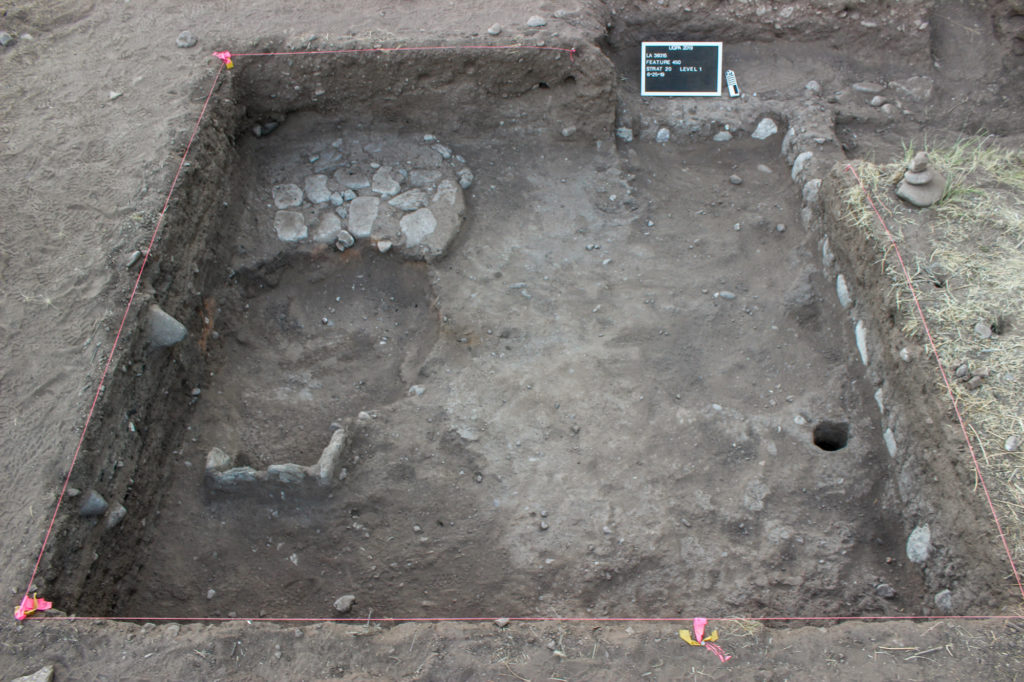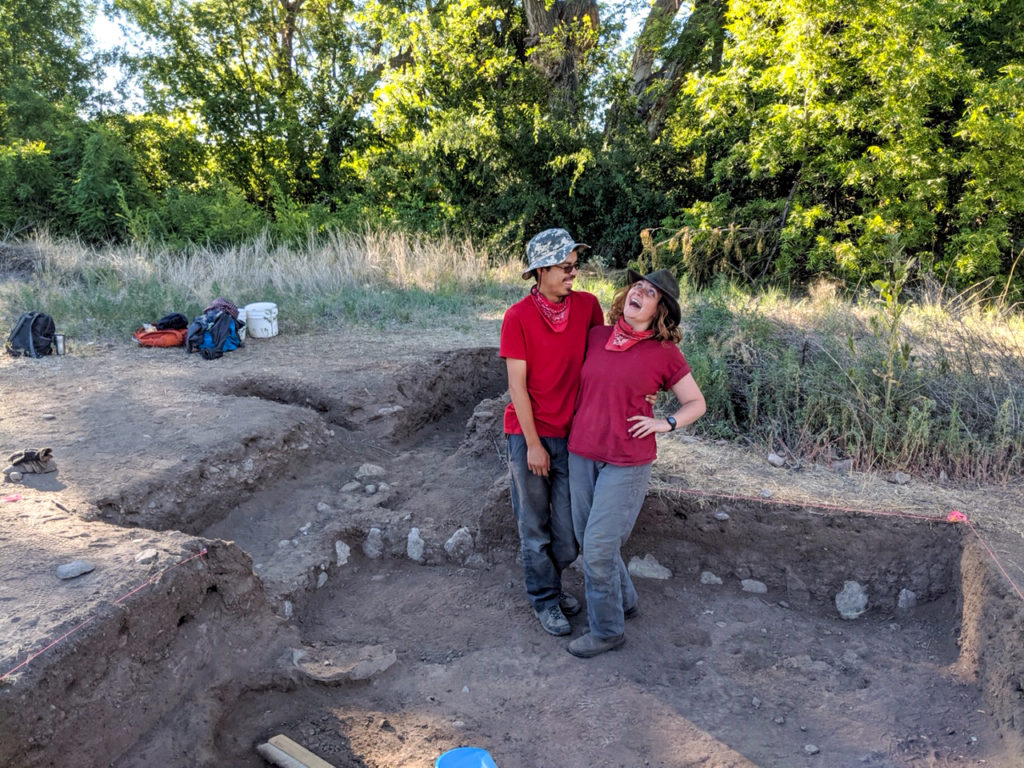- Home
- >
- Preservation Archaeology Blog
- >
- Home Is Where the Hearth Is
(July 1, 2019)—Spaces hold power through time. Your childhood home is still your childhood home, regardless of the amount of time that has passed since your last step across the threshold. Places where you experienced great joy are probably still fondly kept in your memory. Places hold on to energy long after people and events have passed. The emotions and actions that occur in a room or building last forever.
A few days ago, after three weeks of digging, sweeping, and screening dirt, my unit crew found the floor of our room. On its dimpled surface were a broken pot, a slab hearth, and a granary pedestal. As my team and I chipped away the melted adobe and dust surrounding the hearth, I was reminded of my own home. I thought about how much of my life was spent around my fireplace with my family and friends and what a magical space a home can be.

It is sometimes easy to forget that these places belonged to someone else. Archaeology, as a pillar of American anthropology, focuses on the human aspect of our physical findings. If we step in a unit and only see features and artifacts, we are failing the people who used them before us. This room is not just a unit in an archaeological dig, but also a home where a family lived. People undoubtedly laughed at bad jokes, cried after their first heartbreak, slept and ate, gave birth, passed away, and gave comfort to each other in the very place I stood.
This understanding completely changed the way I looked at the items we lifted from the floor and placed safely into artifact bags. I stopped thinking of manos as simple shaped stone and imagined the hands that ground them down to prepare dinner. The granary shifted from flagstone and adobe to a pantry, full of sustenance. The hearth changed from a square of stone and ash to a living room, full of warmth and laughter.

Part of our responsibility to these sites is to honor their pasts. Excavation is inherently destructive, but it is important to find and protect sites. We clear and clean the rooms, conserve the items left behind, and protect the features by refilling the rooms with the screened dirt we removed from them. While my team and I are preparing to start backfilling, I have been thinking about our effect on the space. Our laughter, singing, sweat, and determination are now a small part of the room’s history. As we return it to the earth for safekeeping, I find myself hoping that we have honored the space and those who called it home.
